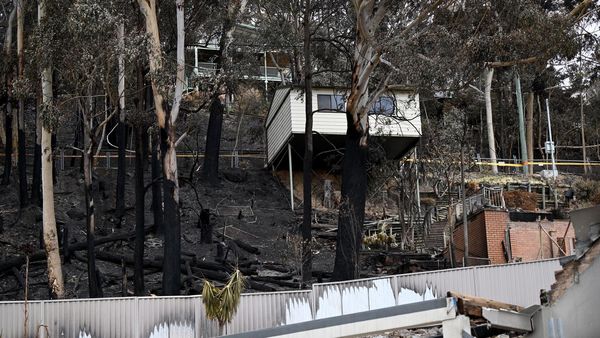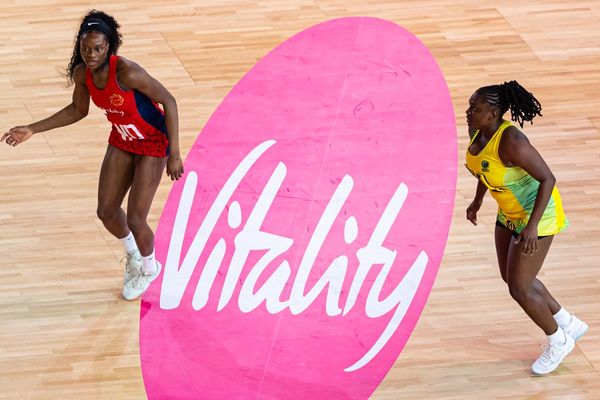PITTSBURGH — The concept of playing football beyond high school originally never occurred to the late Franco Harris.
The son of a World War II veteran and a first-generation Italian mother, Harris' goal growing up in South Jersey in the 1950s and 60s was to follow in the footsteps of his father, Cad, and enlist in a branch of the military. But while Franco was attending Rancocas Valley Regional High School in Mount Holly, N.J., his older brother, Mario, began playing defensive tackle at Glassboro State, now known as Rowan University.
Mario was the first of the Harris clan to go to college.
"When he got that scholarship, it changed the whole thinking of our family and the direction that we could go in," Franco Harris told the Post-Gazette on Dec. 1, three weeks before he died at age 72.
Soon enough, Franco's sensational All-American high school career would earn him some looks from colleges across the country. First came a recruiting trip out to Ohio State, which doubled as his first time in an airplane. Soon enough, he was traveling out to Notre Dame, Michigan, Pitt, Maryland, Syracuse, Cornell and Penn State for visits.
"It was quite an experience, especially for someone growing up and never thinking about college, knowing that it wasn't part of the mix. We were a military family," Franco said. "No one ever talked to us about football scholarships and going to college."
Harris trimmed his list of schools down to Cornell, Michigan and Penn State. He relied on his gut to make the biggest decision at that point in his life; he would enroll at University Park in the fall of 1968 and major in Hotel and Restaurant Management.
"It was a tough choice," Harris said. "My parents weren't educated, so talking about the college experience with them didn't resonate. They were great parents, but they weren't educated."
While still in high school, Harris met a friend for life in Happy Valley in fellow running back Lydell Mitchell. Hailing from Salem, N.J., which is about an hour south of Franco's hometown, Mitchell was on the same recruiting visit to Penn State as Franco in the spring of 1968.
From then until Franco's death, the two were locked at the hip as Mitchell chose Penn State, setting the stage for two future NFL running backs to share a backfield in Central Pennsylvania.
Per NCAA rules, though, freshmen were not eligible to play football in 1968. It wasn't until Title IX was instituted that all freshmen became eligible for competition during the 1972-73 season.
As freshmen, Harris and Mitchell's contributions were limited to the practice field on a Penn State team that would go 11-0 and win the Orange Bowl. While there wasn't any game competition to lean upon, Mitchell quickly identified what the Nittany Lions had between himself and Harris.
"I recognized it when we were freshmen, I really did," Mitchell told the Post-Gazette. "Our freshman year, they brought a lot of running backs up to Penn State. I remember after our first, second practices, I clearly thought, immediately, 'We're the best two guys on the team, best two running backs on the team.' "
As sophomores, Harris and Mitchell got their chances.
Defensive end Bruce Bannon, who would go on to win a Super Bowl with the Miami Dolphins, was a freshman when Harris and Mitchell were in their second years. Like the running back duo, Bannon was also from New Jersey and had followed Harris' high school career from a distance, as he was from the northern part of the state. Once Bannon got on the practice field, he quickly learned just what Harris was all about on the gridiron.
"My freshman year, I would play the defense of the opposing team," Bannon told the Post-Gazette. "When I was a freshman and he was a sophomore, you knew he was a great football player and a great runner.
"He was great at making cuts for sure, the right cuts or the right move to get around someone or break a tackle ... he was excellent at that, to get additional yardage."
During Harris' sophomore year, he tied with senior running back Charlie Pittman for the team lead in touchdowns with 10. Mitchell wasn't far behind with six scores, and each member of the running back trio had at least 600 rushing yards in another undefeated campaign for the 1969 Nittany Lions.
"The first year, he had a spectacular year for a sophomore," Bannon said of Harris. "Great runner, a lot of capabilities."
But Harris' first year, in which he averaged over 5.5 yards per carry, would end up being the pinnacle of his Penn State career. With Pittman no longer in the picture for their junior years, Harris and Mitchell split reps once again, with the latter rushing for more yardage on fewer carries.
In 1971, Mitchell took hold of the feature running back role while Harris dealt with some nagging injuries. Mitchell had a sensational senior campaign, galloping for over 1,500 yards and 29 total touchdowns. Harris, meanwhile, was relegated to a complementary role in which he would sometimes serve as Mitchell's lead blocker in addition to getting his share of touches.
"We certainly blocked for each other, but my senior year, he certainly blocked more for me than I did for him," Mitchell said.
Despite Mitchell receiving the spotlight during a season in which he finished fifth in the Heisman Trophy voting, Harris believes the loads of attention directed toward his running back partner actually helped shed some light on him. Until his senior year, the idea of being drafted hadn't occurred to Harris, nor was it much of a topic of discussion around Penn State's program.
"We never talked about pro football, which was interesting," Franco said. "It wasn't high on our list. Pro football, we just didn't talk about that. We knew we were going to graduate and go get a job."
But instead of preparing to work for a hotel, Harris began to hear during his senior campaign that there was a chance he'd be drafted. He was invited to the Senior Bowl, which he thinks made a difference in the way professional scouts evaluated him.
After all, as Harris put it, he had a good college career at Penn State, but not a great one.
"I don't think Franco reached his full potential in college for different reasons," Mitchell said. "You could see it. I mean, just look at this guy. He's 6-foot-2, 6-foot-3, 230, 235 pounds and his mentality was probably more halfback than fullback. People looked at him and said, 'Well, this guy should be running over you.' All of the sudden, you see he's running by you and putting a move on you and he's gone. Guys couldn't deal with that."
Franco's physique and production when healthy were sufficient for the Steelers to use the No. 13 overall pick in the 1972 NFL draft on him. Mitchell, meanwhile, fell to the second round and went to the then-Baltimore Colts with the 48th pick of the draft.
As many Steelers fans know, Franco was an impact player right off the bat, rushing for over 1,000 yards in his first season, garnering offensive rookie of the year honors in the process and, of course, making the "Immaculate Reception." Collegiate teammates like Bannon and Mitchell might have seen his professional success coming, but Franco seems to think that list of Penn Staters wasn't a long one.
"Who would have thought that I'd have the season that I had?" Franco said with a chuckle. "It surprised and shocked all my teammates at Penn State."
When Harris looks back on that magical first season in Pittsburgh in 1972, he recognizes how improbable his impending success would've seemed just a year or two prior.
Still, he was a player who had earned a reputation among his collegiate teammates for his quick instincts and as someone who always seemed to "go to the ball," even if he wasn't the focal point of the offense on a specific play. That strategy seemed to work out pretty well on that fateful day against the Oakland Raiders on Dec. 23, 1972, a game which Mitchell was in attendance for since the Colts' season had concluded.
"He knew the right thing is when the ball went up, 'I'm going to the ball,' " Mitchell said of Harris. "That's what we learned in college to do and the rest is history. He was in the right place at the right time."
Now, 50 years after the Immaculate Reception and just weeks before his death, Harris remembered how Penn State was a key intermediate period in his life. Instead of preparing for combat in the Vietnam War, he was working out on the Nittany Lions' practice fields and taking classes.
And even after he was drafted, Harris said he dedicated himself to getting ready for his first professional season by seeking out the help of weightlifters and trainers every day at Penn State's Rec Hall, a longtime fieldhouse on campus. In his mind, Harris doesn't need to look much further than his alma mater when doling out credit for his early professional success and one of the most famous plays in NFL history.
"When I think of my rookie year, Penn State forged me into the results of my rookie year," Harris said. "If it wasn't for that, a lot of this stuff wouldn't have happened, from the incredible rookie year I had to being ready to put yourself in a position to make a play and to finish a play, I credit all of that to Penn State. It really made that rookie season happen for me."







